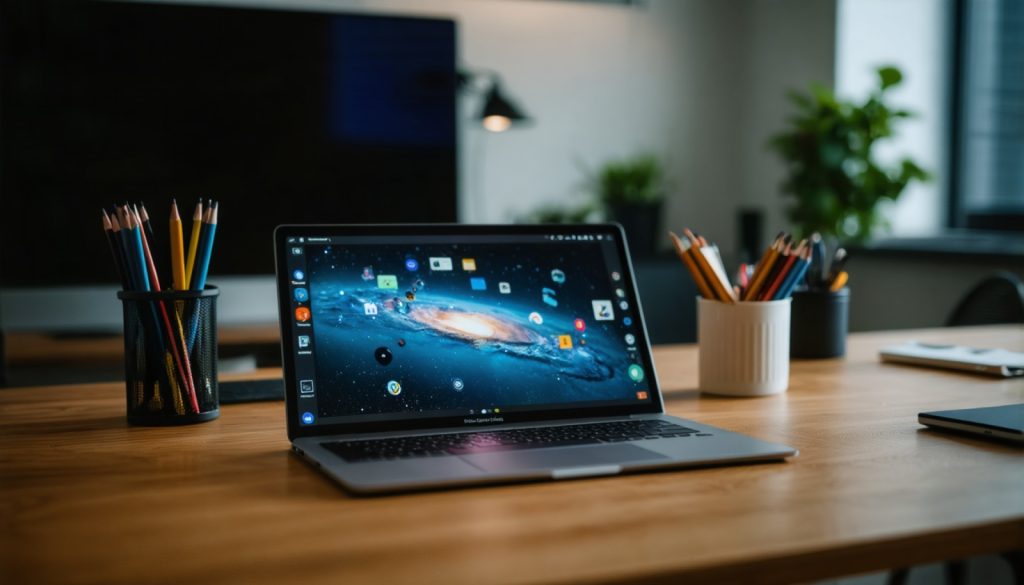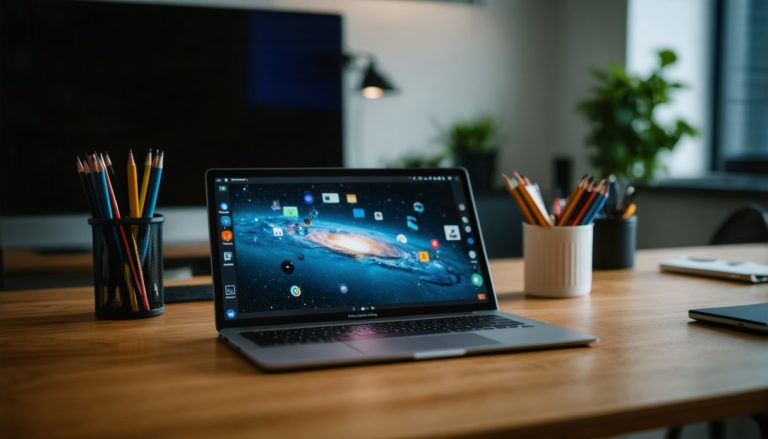
- Meta downsizes its Reality Labs division, affecting VR innovation, including popular apps like Supernatural.
- Microsoft introduces a performance management strategy, offering employees an ultimatum of improvement plans or exit packages.
- Google and Intel enforce hybrid work models, pushing remote employees back to office settings, aiming to enhance collaboration.
- Asian tech giants Xiaomi, Oppo, and Vivo launch new consumer gadgets with impressive features, such as high-capacity batteries and advanced displays.
- Samsung focuses on AI initiatives in India, integrating artificial intelligence into everyday appliances for a smarter lifestyle.
- The tech industry balances between in-office productivity and remote flexibility, while innovation drives future advancements.
The tech landscape has been buzzing with decisive transformations as industry titans take bold steps to redefine workspaces and introduce groundbreaking products. Amid fluctuating market demands, Meta, the social media behemoth, initiated significant job cuts targeting its Reality Labs division. This move affected the hubs of creativity and innovation at Oculus Studios, potentially hampering the progress of apps like Supernatural—a beloved VR fitness app that had just begun to make waves in the realm of immersive health technologies.
Meanwhile, a tectonic shift reverberates through corporate hallways as Microsoft unveils its controversial performance management strategy. Employees grappling with productivity hurdles now face a stark choice: embrace a performance improvement plan or take a generous exit package, reminiscent of the polarizing corporate culture shifts seen at rival Amazon.
Google is reshaping its work ethos, mandating a hybrid model that nudges remote employees back into office spaces. This shift harkens to a pre-pandemic normalcy and challenges the global workforce’s newfound flexibility. Not to be outdone, Intel announced an imminent revamp requiring its workforce back in the office for four days weekly. This move aims to harness the synergy of in-person collaborations, as CEO Lip-Bu Tan charts a strategic pathway to bolster Intel’s market presence.
Yet, in a realm of technological progress, innovation remains undeterred. From the heart of Asia, manufacturers like Xiaomi, Oppo, and Vivo divulged a trove of new gadgets designed to capture consumers’ imaginations. The eagerly anticipated debut of the Redmi Watch Move features a vibrant AMOLED display and an astonishing array of fitness modes, while the powerhouse Oppo K13 5G touts a 7,000 mAh battery—fortifying consumers with longevity and power. Meanwhile, Vivo’s T4 5G enters the fray, boasting an impressive 7,300 mAh battery and a stunning 32MP selfie camera.
As if the consumer tech world weren’t already buzzing, Samsung revealed its India-centric AI initiative, weaving artificial intelligence into everyday appliances and heralding a smarter, more integrated lifestyle.
The takeaway? While tech companies recalibrate the balance between remote work and in-office productivity, their unwavering commitment to innovation persists, promising a future where technology seamlessly enhances daily life. The clamor around hybrid models and high-tech marvels underscores a critical message: adaptability and forward-thinking innovations are the thrusts that will propel industry leaders into the next era.
Unveiling the New Era of Tech and Workplace Dynamics
Navigating the Future of Tech and Work
The current technological landscape is marked by sweeping changes in both innovations and workplace dynamics. Here’s a deeper dive into the major transformations underway, offering fresh insights and actionable recommendations.
1. Meta’s Restructuring: Impact on VR Advancement
Meta’s decision to enact job cuts within its Reality Labs division raises questions regarding the future trajectory of its virtual reality developments. The affected initiatives, including Oculus Studios and applications like Supernatural, highlight potential disruptions. These changes may slow VR fitness technology advancements, challenging Meta to sustain innovation amidst such restructuring.
Insights & Recommendations:
– VR Enthusiasts should monitor updates from Meta regarding future VR releases and support.
– Investors may want to consider the potential impact on Meta’s long-term VR strategy before making financial commitments.
2. Microsoft’s Performance Management Shift
Microsoft’s adoption of a stringent performance management approach has sparked controversy. Employees are being compelled to either embark on performance improvement plans or opt for a severance package. This strategy aims to boost productivity but may affect employee morale and retention.
Actionable Tips:
– Professionals working at Microsoft or in similar environments should focus on clear communication about goals and expectations to navigate these performance assessments successfully.
– Managers can benefit from offering additional support and resources to team members facing performance challenges.
3. The Return to Office: Google and Intel’s Bold Moves
Both Google and Intel are pushing for a return to office-centric work models. Google is enforcing a hybrid model, while Intel is advocating for a four-day in-office week. These strategies reflect a desire to enhance collaboration and communication, but they confront the flexibility preferred by many post-pandemic employees.
How-To Steps for a Smooth Transition:
1. Hybrid Workers should establish a consistent in-office and remote work schedule.
2. Team Leaders can facilitate open forums to address concerns about returning to the office.
3. HR Departments might consider flexible options for individuals with unique circumstances.
4. Asian Innovators: Xiaomi, Oppo, and Vivo’s Gadget Launches
Asian tech giants continue to captivate consumers with innovative gadget releases. Xiaomi’s Redmi Watch Move, Oppo K13 5G, and Vivo T4 5G underscore the region’s prowess in consumer technology, focusing on powerful batteries and impressive camera systems.
Market Trends & Comparisons:
– Xiaomi Redmi Watch Move: Features an AMOLED display and diverse fitness modes.
– Oppo K13 5G: Stands out with a 7,000 mAh battery, ensuring longevity.
– Vivo T4 5G: Offers a high-end experience with a 7,300 mAh battery and a 32MP selfie camera.
Pros and Cons Overview:
– Pros: Extended battery life, impressive display and camera capabilities.
– Cons: Consumers may face a learning curve with new tech integrations.
5. Samsung’s AI-Driven Lifestyle Enhancements
Samsung’s AI initiative in India highlights the convergence of artificial intelligence and daily appliances, aiming to enrich consumer lifestyles with smarter technology.
Real-World Use Cases:
– Smart Home Enthusiasts can look forward to more intuitive smart appliances.
– Tech Consumers may experience enhanced convenience and efficiency with AI-integrated products.
Conclusion: Embracing Change and Innovation
The current shifts in work policies and technological advancements illuminate the importance of adaptability and continuous innovation. For companies and employees alike, embracing these changes will be pivotal in thriving in an evolving landscape.
Quick Tips:
– Stay Informed: Keep up with company updates and market trends.
– Embrace Flexibility: Adapt to new workplace norms with an open mind.
– Explore Tech Innovations: Leverage new gadgets to enhance personal and professional efficiency.
For more information on the evolving tech landscape and strategies for thriving in this dynamic era, explore domains like Meta, Microsoft, Google, and Samsung.



